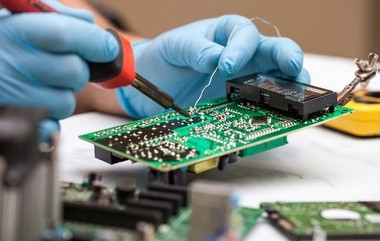☰ Menu
Menu

Soldering is described as the process of taking two objects and melting them together using solder in order to make a connection. Learning how to solder can be a challenge for a beginner, or for someone who is re-entering the industry. Today we will go over 5 best practices for soldering, and how you can apply it to enhance your skills.
Proper Training
When it comes to learning how to solder, receiving the proper training and fundamentals are the keys to success. At EEI Training, we make sure each of our students are taught the fundamentals and techniques. Some the basics we cover will include standard terminology, proper hand tools and equipment used when soldering, and hands-on practice with the solder machines.
Proper Tip Size
Depending on what is being soldered, there are various solder tip sizes to choose from. First, make sure the tip is compatible with the machine you are using. Second, determine if the size of the tip is right for the job. If the tip is too small the heat will not distribute properly, and if the tip is too big you can risk damaging the circuit board.
Proper Use of Flux
Flux is defined as an action or process of flowing or flowing out. It is also known as the act of treating a metal object to promote melting. Flux serves as a chemical cleaning agent to prep metal surfaces for soldering by the removal of any oxidation or impurities. In the IPC J-STD-001 class, we teach students the hand soldering method. We use various forms of flux from tin-lead, lead-free, rosin, and no-clean.
Proper Temperature Times
Knowing specific heat temperatures is important when learning how to solder. As a rule of thumb, tin-lead solder is heated at temperatures from 600° - 650°F and lead-free at 650° - 700°F. However, temperature settings vary with the different variations of solder. The main purpose is to have the tip hot enough to successfully melt the solder without damaging the board and other components.
Proper Way to Clean Tips
In order to keep the tool operating at a high-performance level, it is crucial to clean your solder tips. One way to clean your tips is by using a brass or stainless-steel wool pad. Another method is called tinning. Tinning is when the tip is covered with a thin layer of solder. This method stops you rips from oxidizing. Too much oxidation on the tip prevents heat from transferring properly.
At EEI, we provide the knowledge for our students to succeed. From beginners to experts, we make sure these best practices and others regarding soldering are used. If you have any tips regarding best practices for soldering, share them in the comment section below.